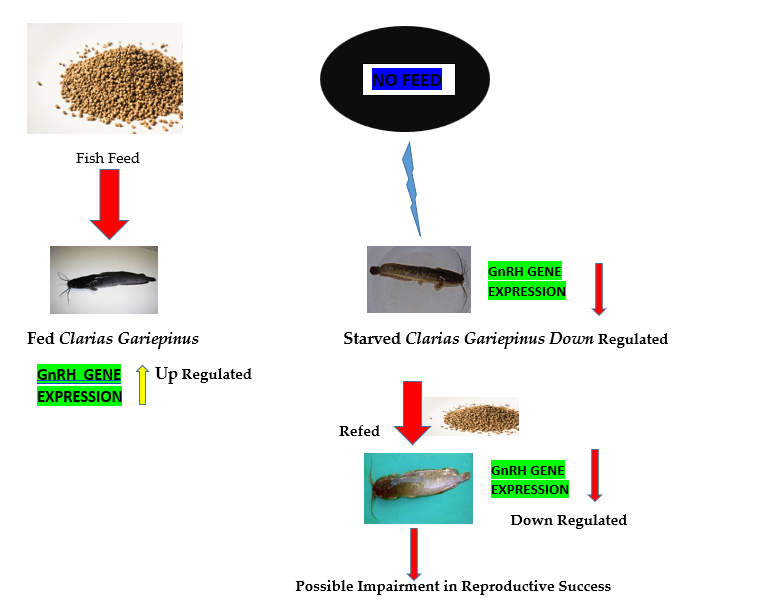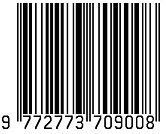Status of Expression of GnRH gene in Fed, Starved, and Refed Clarias Gariepinus (African Catfish)
DOI:
https://doi.org/10.31357/ait.v2i4.6032Abstract
Inadequate nutritional status impairs gonadal activities, which may induce reproductive difficulties in Clarias gariepinus. This research was aimed at evaluating the influence of starvation and subsequent refeeding on the expression of GnRH gene in Clarias gariepinus. One hundred and eighty (180) healthy juvenile Clarias gariepinus (African catfish) used in this study were randomly placed into two groups in triplicates. Fish in the control group were fed to satiation while fish in the treatment group were starved and refed and the fish in the control group were continuously fed. Brain tissue samples were collected after 7 days and 14 days of starvation, histopathology, and gene expression studies were done. The histological sections of brain tissue of week one starved and fed, C. gariepinus show neuronal cells on a background of neuropil while week two starved reveal badly distorted morphological architecture and degenerated neuronal cells. However, the week two re-fed, C. gariepinus brain tissue shows vacuolation of neuropil while the week two continuous fed shows no abnormalities. No mortality was recorded during starvation and the entire experimental period. In the second week of starvation, a decrease in the fold change (1.7) was observed when compared to week one while the fold change (1.2) observed in week three (week one of re-fed) is lower than the fold change observed in week one and two of starvation. The fold change (1.7) observed in week four (week two re-fed) is higher than the fold change observed in week three. The highest fold change (2.13) was observed in week one of starvation while the lowest fold change (1.24) was observed in week one of re-feeding. This study reveals that exposure of C. gariepinus to prolonged food deprivation alters the expression of GnRH, which might lead to impairment in the reproductive success of Clarias gariepinus.

Downloads
Published
How to Cite
License
Copyright (c) 2022 joseph minari, Josephine Oshio AYOKHAI, Balikis Olabisi SHOLAJA

This work is licensed under a Creative Commons Attribution-NonCommercial-NoDerivatives 4.0 International License.
The Authors hold the copyright of their manuscripts, and all articles are circulated under the terms of the Creative Commons Attribution License, which permits unrestricted use, distribution, and reproduction in any medium, as long as that the original work is properly cited.
The use of general descriptive names, trade names, trademarks, and so forth in this publication, even if not specifically identified, does not imply that these names are not protected by the relevant laws and regulations. The authors are responsible for securing any permissions needed for the reuse of copyrighted materials included in the manuscript.




